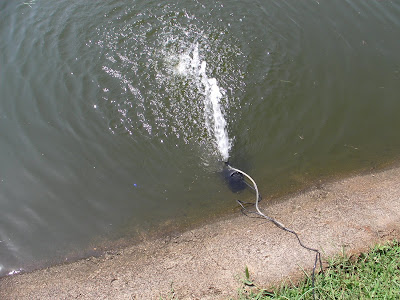 |
| A well covered fish pond to avoid predators |
Fingerlings can be obtained from centers of multiplication and stocked as soon as your pond is ready.
The price
of fingerlings range between $0.04 and $0.07 for a tilapia and catfish respectively
but can vary depending on location.
Consider
the size of your fish to avoid overstocking as this will create unnecessary competition
for food
and oxygen leading to starving or even death of your fish.
 |
| One day old fingerlings in a fingerling pond |
Get advice
from your nearby fisheries department on the type of feed to use in feeding
your fingerlings.
For example;
Tilapia ingests a wide variety
of natural food organisms, including plankton, some aquatic macrophytes,
planktonic and benthic aquatic invertebrates, larval fish, detritus, and
decomposing organic matter.
With heavy supplemental feeding, natural food organisms typically account for 30 to 50 percent of tilapia growth according to http://www.thefishsite.com/articles/58/tilapia-life-history-and-biology
With heavy supplemental feeding, natural food organisms typically account for 30 to 50 percent of tilapia growth according to http://www.thefishsite.com/articles/58/tilapia-life-history-and-biology
 |
| Oxygen supply to a pond |
Ensure constant
oxygen supply in your pond, the pond should be well fenced and covered to
prevent predators from attacking your fish.
 |
| Harvested fish ready for the market or consumption |
If well
practiced, fish farming is a lucrative business other than providing a basic
meal for your family members.
Pond sizes
can be obtained from fisheries department or some websites like http://www.gardensite.co.uk/How_to_Calculate_Pond_Size/
can offer useful
information.

No comments:
Post a Comment